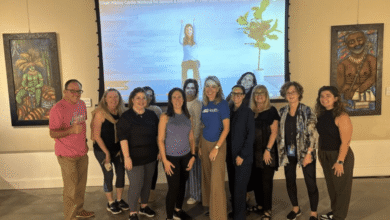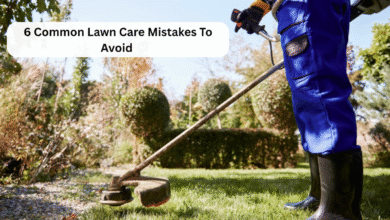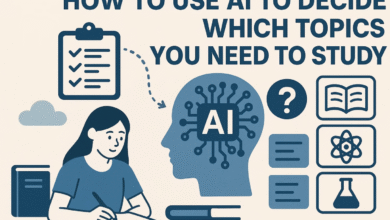Mastering AI-Powered Tweets and Reels for the UK Audience

Artificial intelligence (AI) is transforming how bloggers and small businesses approach social media. If you’re aiming to grab attention on Twitter or create eye-catching Reels for Instagram, AI can be your secret weapon—helping you refine your messaging, tap into UK-specific trends, and produce content that resonates. In this article, we’ll explore practical ways to harness AI tools for crafting viral tweets and Reels tailored to a UK audience. You’ll learn how to choose the right keywords, where to find trending topics, and which AI platforms deliver the best results without compromising your unique voice.
Why Use AI for Social Media in the UK?
Social media algorithms favour content that generates rapid engagement—likes, retweets, shares, comments—and AI can accelerate that process in several ways:
Speed and Efficiency: Instead of spending hours brainstorming tweet ideas or Reels scripts, AI provides a starting point in seconds.
Trend-spotting: UK-specific AI tools can scan trending hashtags, news headlines from the BBC or The Guardian, and even regional chatter—from Manchester United transfer rumours to Glastonbury Festival line-ups.
Consistency: With AI-driven content calendars or automated copy suggestions, you’ll post regularly, increasing the chances of going viral.
A/B Testing at Scale: AI can generate multiple tweet variations or Reel captions, letting you test which one gains traction.
That said, AI is most effective when combined with human creativity and local knowledge. It’s a support tool, not a full replacement for your brand’s personality.
Crafting Viral UK-Centric Tweets
1. Start with the Right AI Tool
Several AI-driven platforms can help with tweet creation. Two popular choices include:
ChatGPT (OpenAI): Great for brainstorming, reframing headlines, and generating short, punchy copy.
Hootsuite’s “AI Social Composer”: Offers suggestions based on your recent posts, audience engagement, and current trends in your region.
When you log into ChatGPT, you might prompt it with:
“Write five tweet ideas about weekend staycations in Cornwall, using British spelling and a friendly tone.”
This yields localized suggestions—and you can refine further, specifying “include a pun or cultural reference” if you want to capture that typically British wit.
2. Incorporate UK-Specific References
To resonate with a UK audience, mention local landmarks, events, or cultural touchpoints. For instance:
Weather Quips: “Only in the UK can you start a hike with sunshine and end it in a downpour. 🌦️ #BankHoliday”
Football Chatter: “Can’t believe Chelsea dropped points at Stamford Bridge again. Think Lampard’s boys have lost their swagger? ⚽#PremierLeague”
Seasonal Events: “Gearing up for Glastonbury? Don’t forget your wellies—unless muddy boots are the new festival chic. 🎶👢 #Glasto2025”
By tying your tweets to national events (general election chatter, royal news, or local festivals like Edinburgh Fringe), you boost relatability—and AI can help identify which topics are peaking right now.
3. Optimise for Engagement
AI tools can suggest the optimal tweet length, ideal posting times, and trending hashtags. For example, using Hootsuite’s analytics, you might discover that tweets posted between 6pm and 8pm GMT on Wednesdays gain 20% more engagement among UK audiences. AI can then recommend:
“Based on UK peak times, schedule your tweet with hashtags like #UKSmallBiz and #DigitalMarketing at 7pm on Wednesday.”
Experiment with:
Questions: “Which seaside town are you heading to this Bank Holiday? 🌊”
Polls: “Fish and chips by the seaside or a Sunday roast at home? Vote below! 🍽️🇬🇧”
Calls to Action: “Retweet if you agree that nothing beats a cuppa and a sausage roll at Wembley. ☕🥐”
Always keep your brand voice consistent—AI-generated text should be edited to reflect your personality, whether that’s cheeky, informative, or community-driven.
Producing Scroll-Stopping UK Reels
1. Outline Your Objective First
Before diving into AI tools, decide what your Reel will achieve: raise brand awareness, announce a new product, or showcase behind-the-scenes footage of your blog workflow. Once you have a clear goal, AI can help structure your content.
2. Script and Storyboard with AI
Platforms like InVideo and Lumen5 use AI to convert text outlines into video storyboards. Here’s how to proceed:
Draft a short script: “Heading to Brighton this Bank Holiday? Here are three hidden cafés you need to try. 1) Java Jive on North Street for artisan brews, 2) Seaside Sips on Duke’s Mound for ocean views, 3) The Urban Roaster on Bond Street for vegan bites.”
Feed it into the AI platform: The tool matches each sentence with royalty-free clips or suggests stock footage. It will also propose on-screen text overlays and transitions.
Refine the storyboard: Swap out any generic UK scenes for your own footage (e.g., a quick shot of Brighton Pier). Add text captions that double down on key phrases: “Hidden Cafés in Brighton” or “Bank Holiday Must-Try Spots.”
As you finalise your Reel, remember to experiment with pacing—retain quick cuts (no more than 3–5 seconds per shot) to keep viewers hooked
3. Leverage AI for Captivating Visuals
AI tools like Canva’s Magic Resize or Kapwing’s AI Video Enhancer can upscale or reframe your footage for vertical smartphone viewing. When you need help ideating a thumbnail or logo overlay for Instagram, you might consult tutorials on how to write AI art prompts—using prompts like “Create a colourful Reel thumbnail featuring Big Ben, a steaming latte, and bold text saying ‘Top 3’” to generate eye-catching imagery in seconds. Once you have a striking thumbnail, use it as your Reel cover to boost click-through rates.
4. Optimise Captions and Hashtags
Captions on Reels should be concise yet informative, ideally under 150 characters. AI caption generators—such as Caption AI—allow you to input your video’s theme and receive several caption options. For example:
“3 café gems in Brighton you can’t miss. Which one are you heading to first? ☕🌊 #BrightonEats #UKTravel”
To find trending UK hashtags, consult tools like RiteTag or Influencer Marketing Hub’s Hashtag Generator with region filters set to the UK. AI can suggest popular local tags (#VisitBritain, #TravelUK, #BritishFoodies) alongside niche ones (#BrightonCafes, #UKBloggers), balancing high-volume and lower-competition tags. Switch them up across Reels to see which combinations drive the most views.
Best Practices for AI-Driven Social Content
Maintain Your Authentic Voice: AI can propose copy, but only you know your brand’s tone—be that witty, informative, or community-focused. Always tweak AI suggestions to sound like you.
Vet Facts and Figures: AI can occasionally produce outdated or inaccurate data. If your tweet claims “90% of Brits prefer oat milk,” double-check the source before posting.
Avoid Overreliance: Use AI for ideation and first drafts, but invest time refining posts. Overly generic AI copy can blend into the feed rather than stand out.
Stay Up-to-Date with UK Trends: AI tools draw on past data. Check trending pages on Twitter UK, follow key influencers, and monitor local news to ensure your content remains timely.
Test and Iterate: A tweet that worked for a London-based audience may not resonate in Glasgow or Cardiff. Use AI’s A/B testing features—generate two tweet versions, monitor engagement, and let the data guide future choices.
Real-World Examples
Example 1: Local Business Launch
A small café in Manchester wanted to announce its new afternoon tea menu. Using AI, they:
Generated three tweet drafts:
“Excited to serve you our new scones and pastries from 2pm today! Fancy a cuppa? ☕🍰 #ManchesterEats”
“Afternoon tea is back—now at The Northern Nook from 2pm! Who’s joining us? 🫖❤️ #ManchesterFoodies”
“Stay cosy this afternoon with our new tea menu—scones, jam, and all the trimmings. See you at The Northern Nook! 🍰🥂 #UKFood”
Tested each tweet over 48 hours. The second draft, which mentioned “ManchesterFoodies,” gained 30% more engagement.
Created a Reel storyboard using Canva’s AI tools: five short clips of their pastry chef prepping scones, pouring tea, and setting a cosy table by a window overlooking Deansgate. AI-suggested text overlays made it quick to produce the final cut.
The result? A 50% increase in foot traffic over the weekend compared to previous weekends—demonstrating AI’s value in pinpointing local lingo and visuals.
Example 2: UK Travel Blogger Series
A travel blogger based in Edinburgh wanted to share hidden gems in Scotland for solo travellers:
Tweet Ideas: The blogger used ChatGPT to draft tweets featuring local slang—“Fancy a wee adventure? Check out these Edinburgh hidden spots for solo wanderers! #SoloTravel #Scotland”
Reel Script: They then used Lumen5 to outline a Reel:
Intro shot of Arthur’s Seat, text overlay: “5 hidden gems in Edinburgh”
Clips of Dean Village, the Secret Herb Garden, and the Water of Leith.
Caption suggestions from AI included “Tag a mate who needs a wee escape!”
Within two weeks, engagement rose by 40%, and the Reel gained organic shares among solo travel communities.
Looking Ahead: The Future of AI on UK Social
AI won’t replace authentic storytelling, but it will continue to streamline content creation. Expect more advanced sentiment analysis—tools that gauge UK audience reaction to political events, football results, or weather extremes. Soon, AI might even suggest which local influencers to partner with based on micro-engagement metrics, letting you tap into niche UK communities (e.g., cycling groups in Bristol or vegan foodies in Brighton).
If you’re serious about growing your Twitter following or producing Reels that spark conversation, start experimenting with AI now. Allocate a small budget for premium AI features—such as real-time trend tracking, sentiment analysis, or advanced keyword research—to supercharge your results. Combine those insights with your on-the-ground knowledge of UK culture, and you’ll increase the odds of going viral without losing the human touch.
In summary, AI can help you craft localised content that speaks directly to UK audiences—whether you’re tweaking tweet copy to include “wee” or “holiday” in the right context, or storyboarding a Reel featuring Stonehenge at sunrise. Treat AI as a collaborative partner, refine its outputs, and lean into the unique quirks that make UK social media tick. Before long, you’ll see your tweets getting retweeted across London’s boroughs and your Reels lighting up feeds from Edinburgh to Exeter.




